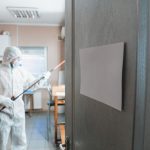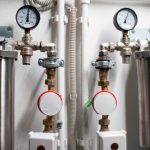Our Address:
Mold growth in commercial buildings is not just a cosmetic issue; it poses significant health risks and can indicate underlying problems like water damage or humidity issues. Addressing mold promptly and effectively is crucial for maintaining a safe and healthy environment. Companies like Commercial Interior Solutions (CIS), operating in areas such as Tampa, St. Petersburg, Clearwater, and Largo, emphasize the importance of professional mold inspection and testing as the first step in ensuring a mold-free environment. Here’s a guide to the essential steps involved in mold inspection and testing.
Recognizing the Need for Mold Inspection
Visible Signs: Often, the first indication of mold is its visible presence on walls, ceilings, or other surfaces. Mold can appear as spots or patches of various colors, including black, white, green, or yellow.
Musty Odors: A persistent musty or earthy smell is a strong indicator of hidden mold growth, especially in areas where visibility is limited, like behind wallpaper or in HVAC systems.
Recent Water Damage: Any recent incidents of flooding, leaks, or significant water intrusion should prompt a mold inspection, as these conditions create ideal environments for mold growth.
Health Symptoms: Unexplained allergic reactions or respiratory issues among building occupants can be signs of mold exposure, warranting an inspection.
The Mold Inspection Process
Hiring Professionals: Engage a professional mold inspection service with the expertise and tools to identify mold issues accurately. CIS and similar companies offer comprehensive inspection services.
Visual Inspection: The process begins with a thorough visual examination of the property, focusing on areas prone to moisture and known for mold growth.
Moisture Assessment: Because mold needs moisture to grow, inspectors use moisture meters and thermal imaging cameras to identify areas with excess moisture or water damage.
Sample Collection: If mold is suspected but not visible, or if the type of mold needs to be identified, inspectors may collect air, surface, or material samples for laboratory analysis.
Laboratory Analysis: Collected samples are analyzed in a lab to identify the types of mold present and their concentrations. This information is crucial for assessing health risks and determining the appropriate remediation strategy.
Interpreting Results and Next Steps
Understanding the Report: A comprehensive report from the inspection will detail the findings, including the locations and extent of mold growth and moisture issues, as well as the types of mold identified.
Remediation Recommendations: Based on the inspection results, the report will also recommend steps for mold remediation. This might involve cleaning, removing contaminated materials, and addressing the sources of moisture.
Professional Remediation: For significant mold issues, professional remediation is recommended to safely and effectively remove mold and prevent its return. Companies like CIS provide specialized remediation services.
Preventing Future Mold Growth
Addressing Moisture: The key to preventing mold is controlling moisture levels. Fix leaks, improve drainage, and ensure proper ventilation to keep humidity levels in check.
Regular Inspections: Conduct regular inspections of areas prone to moisture and mold, especially after incidents of water damage.
Educating Staff: Educate building occupants and staff about the importance of prompt reporting of leaks, spills, and areas of condensation.
Mold inspection and testing are critical steps in creating and maintaining a healthy commercial environment. By identifying mold issues early and taking decisive action to address them, property owners and managers can protect the health of occupants and preserve the integrity of their buildings. Engaging with experienced professionals like Commercial Interior Solutions for inspection, testing, and remediation ensures that mold is addressed effectively, safeguarding the well-being of everyone who uses the space.





